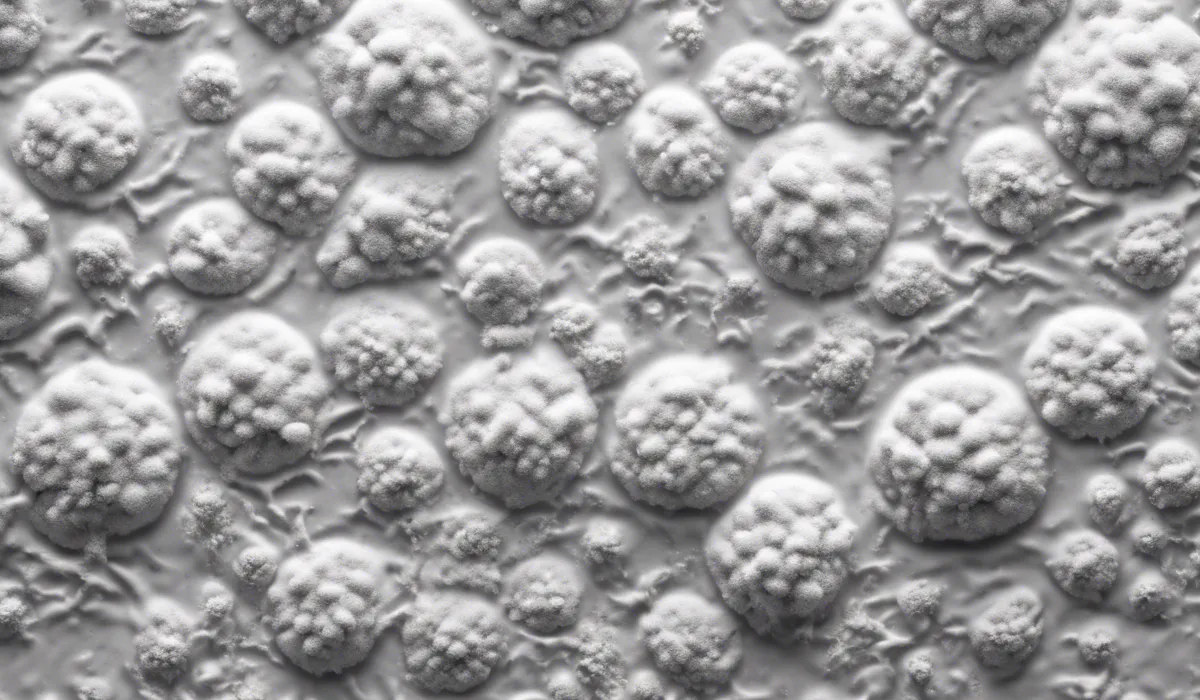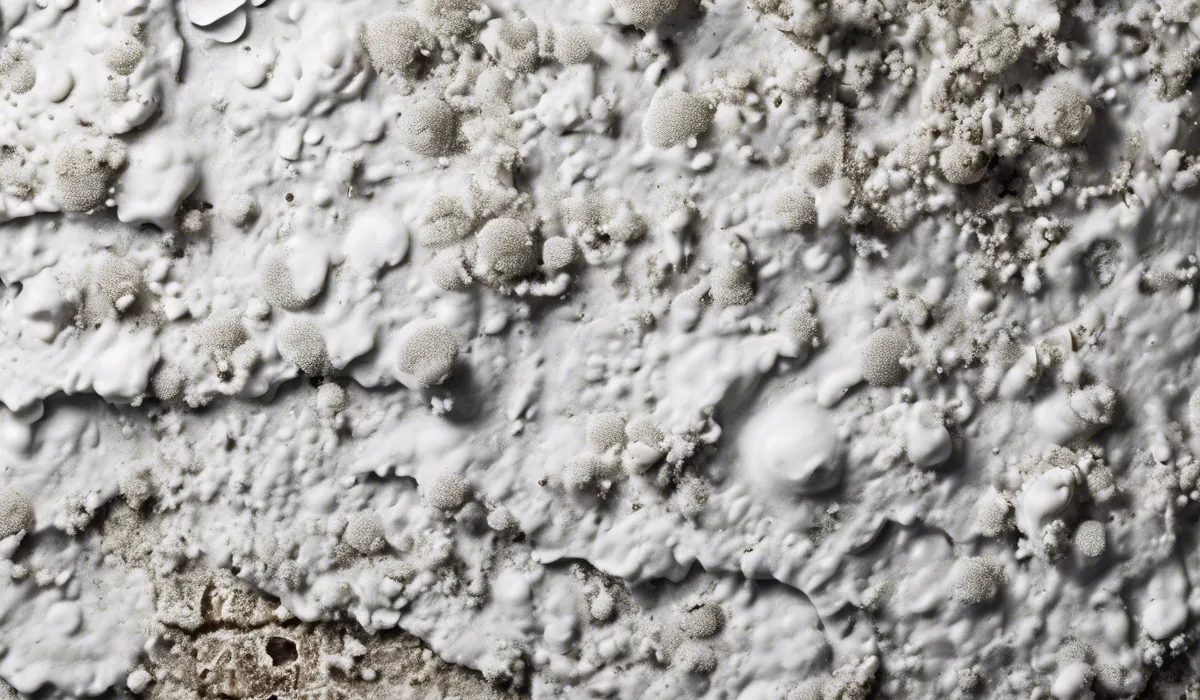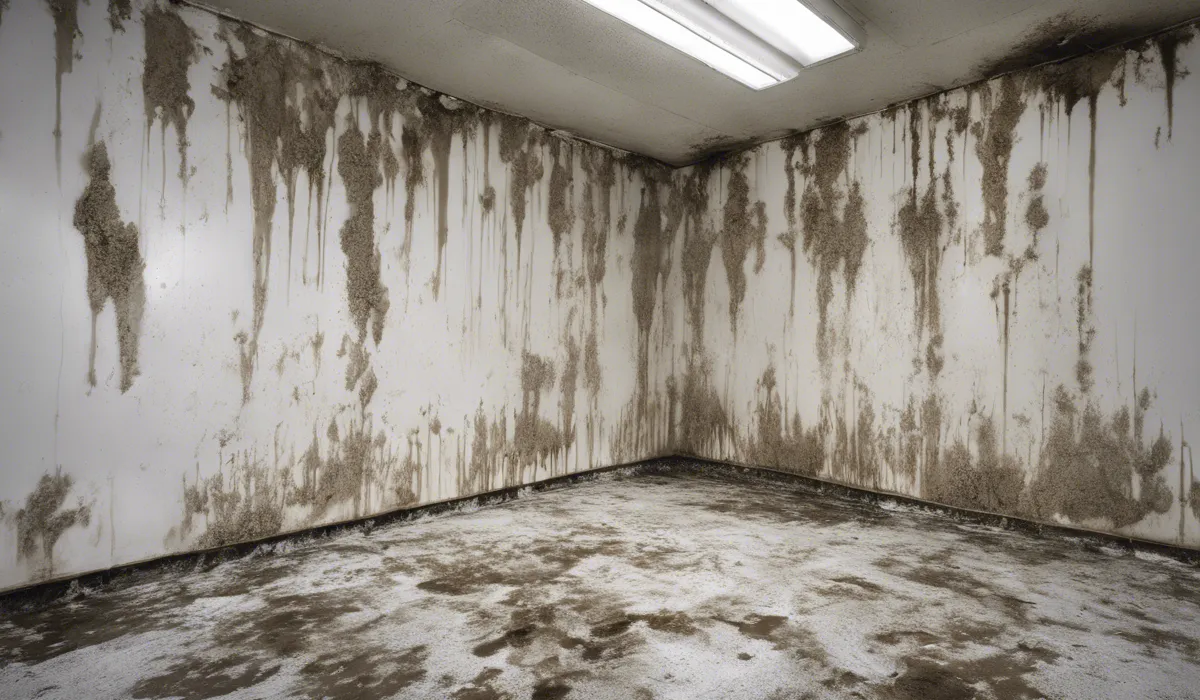Vinegar can kill white mold effectively. A solution of water and vinegar, with a ratio of 1:1, directly applied to the mold has a high success rate. Always wear protective gear when treating mold.
Understanding White Mold

What is White Mold?
White mold is a type of fungus that appears as a powdery, white substance. It thrives in moist, warm conditions and can grow on various surfaces such as wood, drywall, and fabric.
This mold often looks fluffy or cottony and can spread quickly if not controlled.
Where White Mold Lurks?
White mold commonly infests basements, crawl spaces, kitchens, and bathrooms where moisture levels are higher.
It can hide behind walls, under carpets, and in ceiling tiles. Its presence is not always visible to the naked eye, making it harder to detect.
Causes of White Mold Growth
White mold growth is spurred by high humidity, lack of ventilation, and damp conditions. Leaks, flooding, and condensation are prime contributors to its proliferation.
Organic materials in homes, such as wood and paper, provide the perfect food source for mold.
Health Risks of White Mold
Exposure to white mold can lead to health issues, especially for those with allergies or weakened immune systems.
Symptoms can include respiratory problems, coughing, sneezing, and irritation of the eyes, nose, and throat. In severe cases, it can exacerbate asthma and cause allergic reactions.
Methods to Kill White Mold

Using Bleach Solutions
A common way to address white mold is by using a bleach and water mixture. Mix one cup of bleach with one gallon of water and apply it to the affected area, allowing it to sit for several minutes before scrubbing away the mold.
This method is effective for non-porous surfaces.
Commercial Mold Removal Products
There are many products available that are specifically designed to combat mold. These often come in the form of sprays or solutions that can be applied directly to the moldy area. Follow the manufacturer’s instructions for the best results.
Vinegar and Baking Soda Solutions
Vinegar is an effective, natural alternative for killing white mold. A one-to-one mixture of water and vinegar can be sprayed onto moldy surfaces.
After an hour, wipe the surface clean. For tougher mold, make a paste with baking soda and water, apply it to the area, and scrub.
Tea Tree Oil Mixture
Tea tree oil is a natural fungicide. Mix a teaspoon of tea tree oil with a cup of water and spray it onto the mold.
Do not rinse it off. Tea tree oil has a strong scent that dissipates as it dries, and it’s safe for most surfaces.
Preventative Measures for Mold Control
To prevent mold from taking hold, improve ventilation in moisture-prone areas. Use exhaust fans in bathrooms and kitchens.
Regulate humidity levels with dehumidifiers and ensure your home is cleaned regularly, paying close attention to damp spaces.
Professional Remediation and Prevention

Recognizing the Need for Experts
If the mold covers a large area, is in the HVAC system, or if you have health concerns, it’s time to call in professional mold remediation services.
They have the expertise and equipment to safely and effectively remove the mold.
Professional Mold Removal Process
Professionals will assess the extent of the mold, contain the area to prevent spores from spreading, and use specialized equipment to remove the mold.
They will also clean and disinfect the area and suggest measures to prevent future growth.
Building a Mold-Resistant Home
Using mold-resistant building materials, such as drywall and paints with mold inhibitors, can reduce the likelihood of mold growth.
Ensure your home’s design encourages proper drainage away from the foundation to prevent water accumulation.
Long-Term Mold Prevention Strategies
Install dehumidifiers and air purifiers to manage indoor air quality and moisture levels.
Perform regular inspections, especially in areas prone to dampness, and address any water leaks or condensation issues promptly to deter mold from returning.
Ongoing Mold Inspections and Monitoring
Regularly inspect your home for signs of mold, especially after heavy rains or in seasons with high humidity.
Look for discoloration or a musty smell as indicators of potential mold problems. Early detection and remediation are key to preventing mold from spreading.
FAQs About White Mold Treatment
What household product can kill white mold?
Vinegar, particularly a solution of equal parts water and vinegar, can effectively kill white mold when applied directly.
Is vinegar more effective than bleach for killing white mold?
Vinegar is an effective alternative to bleach for killing white mold, especially on porous surfaces where bleach is less effective.
Can white mold be killed without the use of chemicals?
Yes, white mold can be treated with natural solutions like vinegar or by using commercial mold removal products that are environmentally friendly.
What precautions should be taken when treating white mold?
Always wear protective gear such as gloves, a mask, and eye protection when treating mold to avoid exposure to spores.
Can sunlight kill white mold?
Sunlight can help kill mold by drying out the affected areas, but it may not be as effective as direct treatments like vinegar or commercial mold removers.
Final Thoughts
Vinegar is an effective agent for killing white mold, with a simple 1:1 water-vinegar solution proving highly successful when applied directly to the affected area.
It is crucial to prioritize safety by wearing protective gear during the mold remediation process.
